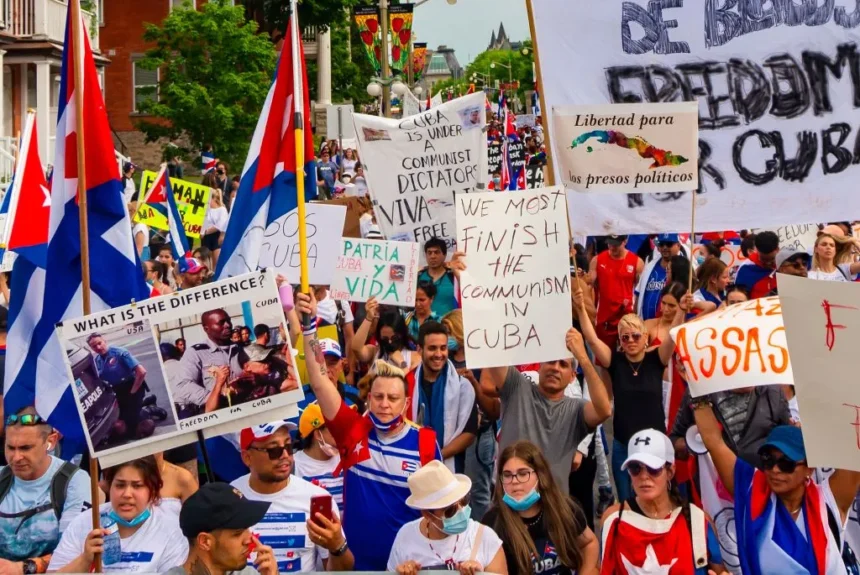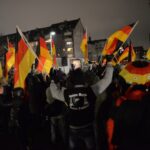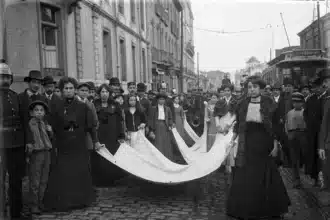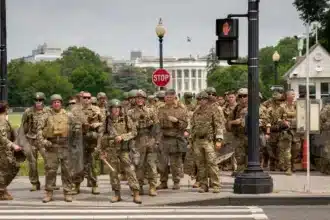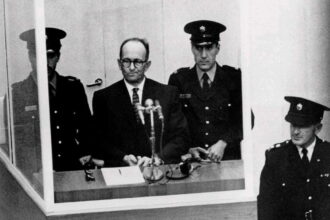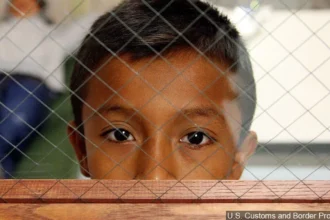The Cuban dictatorship has maintained its grip on power for 65 years, committing numerous human rights violations that are extensive and challenging to encapsulate. This essay highlights three specific instances of criminal behavior by government agents over the past three decades, all occurring in July.
- Mass Nonviolent Protests Suppressed with Lethal Force
- Dissidents Operating Within Legal Framework Murdered by Government Agents
- Cubans Massacred by Regime Agents When They Fled the Island to Live in Freedom
- Protesting Deaths of Their Loved Ones by the Government Led to Murder Attempts
- Lack of International Solidarity
- A Call to Action
These instances include the violent repression of peaceful protests in July 2021, the murders of Cuban dissidents Oswaldo Payá and Harold Cepero on July 22, 2012, and the tragic deaths of 37 Cubans when the “13 de marzo” tugboat was attacked and sunk on July 13, 1994.
Witnesses documenting regime brutality are rounded up and sentenced to long prison terms.
These events, thoroughly documented, underscore the brutality of the Cuban communist regime and the critical need for international solidarity with the Cuban people against their oppressive government.
Mass Nonviolent Protests Suppressed with Lethal Force
Three years ago, on July 11, 2021, mass protests across Cuba marked a significant milestone in the island’s history. Hundreds of thousands of Cubans took to the streets to demand freedom and an end to the communist dictatorship, risking their lives in the process. Simultaneously, the totalitarian regime revealed its willingness to use violence, including lethal force and intimidation, to suppress all civilians advocating for nonviolent change.
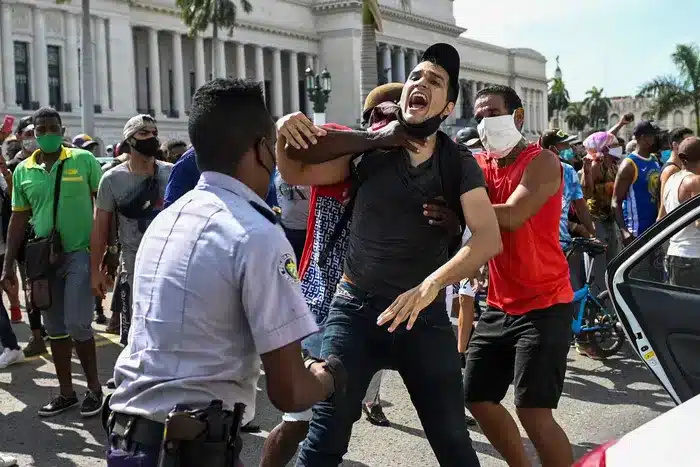
In San Antonio de los Baños, 16 miles from Havana, thousands of Cubans protested and spoke out. Images were shared on social media, and the flames of dissent spread across the island before the regime could extinguish them. Cubans marched in over 50 cities and hundreds of other communities, singing lines from the protest hymn Patria y Vida and demanding freedom, an end to tyranny, a homeland, and life. The dictatorship was rocked by this spontaneous and nonviolent protest.
Miguel Diaz-Canel, Raul Castro’s hand-picked president, responded explicitly on the same day, stating, “We are calling on all the revolutionaries of the country, all the communists, to take to the streets and go to the places where these provocations are going to take place today, from now on, and in all these days, and face it decisively, firmly, with courage.” He concluded his speech by saying, “The order of combat has been given, revolutionaries take to the streets.“
Facebook, WhatsApp, Instagram, and Telegram were all restricted by Cuba’s dictatorship.
Regime agents beat and shot Cubans, and thousands were arbitrarily detained. On July 12, 2021, Christian Barrera Díaz went missing during a nonviolent march. Police first claimed he was arrested, then said he drowned, and finally stated he was buried in a mass grave. His family believes he was beaten to death by police. On the same day, Diubis Laurencio Tejeda, a 36-year-old singer, was shot in the back by the dictatorship’s police while participating in the 11J protests in Havana. Government agents terrified other victims’ relatives into silence. Despite this, images of the military firing on unarmed protestors have emerged.
Three years later, there are still more than 1,100 political prisoners in Cuba. During this time, over 500,000 Cubans fled the island. However, nonviolent protests and the regime’s brutality endure. Witnesses documenting regime brutality are also rounded up and sentenced to long prison terms. New regulations have been approved and applied to penalize anyone who produces content that portrays the dictatorship poorly.
Dissidents Operating Within Legal Framework Murdered by Government Agents
Cubans who advocated for nonviolent democratic changes within the legal framework of the regime were not immune to the use of lethal force by government agents. On June 12, 2023, the Inter-American Commission on Human Rights (IACHR) concluded a decade-long investigation proving that operatives of the Cuban state were responsible for the July 22, 2012 murders of Cuban dissidents Oswaldo Payá and Harold Cepero, of the Christian Liberation Movement.

The Christian Liberation Movement, led by Oswaldo Payá, had organized a petition drive, the Varela Project, to reform the system, gathering tens of thousands of signatures, drawing the ire of the dictatorship.
European democracies decried the repression but did little to sanction Cuba’s regime.
Oswaldo also called out efforts by the dictatorship to perpetuate itself through what he termed “fraudulent change.”
During the Obama thaw with Cuba (2009–2017), Havana recognized that the normalization of diplomatic relations was a bigger priority for Washington than solidarity with the dissident movement. The deaths of high-profile opposition figures began in 2010, with Orlando Zapata Tamayo, followed by the original leader of the Ladies in White, Laura Pollán, in 2011, and Oswaldo Payá and Harold Cepero in 2012.
Rosa María Payá spoke at the 8th Geneva Summit for Human Rights and Democracy on February 23, 2016, about the July 22, 2012, incident involving her father, Oswaldo Payá, and friend Harold Cepero.
“On July 22, 2012, my father was extrajudicially executed by agents of the political police, together with my dear friend Harold Cepero, staging a car crash that never took place, in a location of Cuba that remains to be determined. Not satisfied with this double crime, my family was threatened with death… In the summer of 2015, a special report was released by the Human Rights Foundation, where all evidence indicates that this was a crime against humanity, with the involvement of Cuban authorities. We’ll never give up on justice, because there can be no reconciliation without the recognition of the whole truth. A nation that pretends to forget the violence against its innocent people will remain a captive nation. And it will be a nation condemned to suffer such violence over and over again.“
The Cuban dictatorship not only murdered Cubans striving to restore freedom on the island but also killed those attempting to leave Cuba in search of a better life.
Cubans Massacred by Regime Agents When They Fled the Island to Live in Freedom
On July 13, 2022, Jorge A. Garcia, a Cuban writer and journalist who lost 14 family members in the massacre, gave an account of what transpired that early morning in 1994.
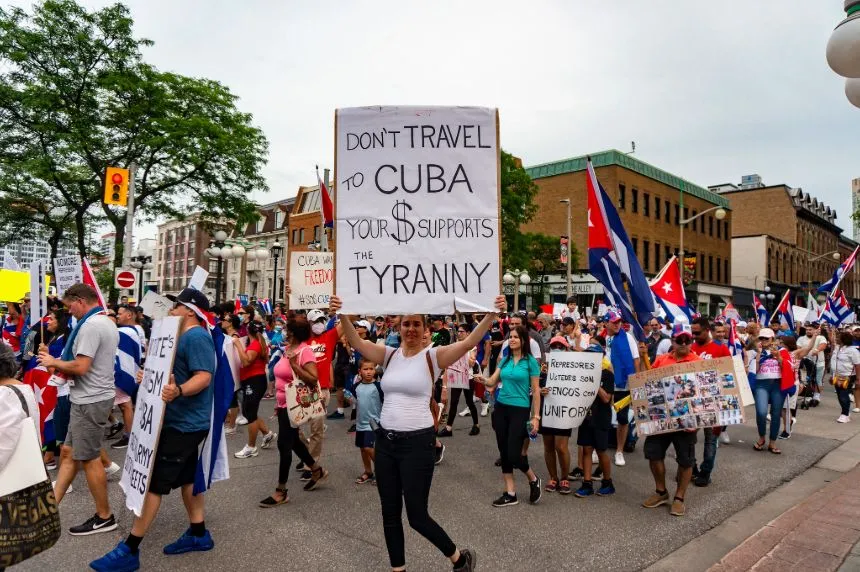
“It was not an accident as the spokesmen of the dictatorship usually claim on this date. I still have very fresh in my mind the testimony of the survivors and the results of my investigations about what happened that dark night of July 13, 1994, at 3:50 in the morning, seven miles from the Havana seawall: Under the command of Division General Senén Casas Regueiro, the regime carried out a macabre punishment with the support of three vessels Polargo 2, 3, and 5 (mostly manned by undercover soldiers). Using pressurized water jets and heavy rolls, they sank the tugboat 13 de Marzo with 68 people on board. Despite the plea of the victims, many without knowing how to swim, thrust into the sea and surrounded by sharks, the murderous ships left the scene without providing help. The genocide left a toll of 37 dead (10 children included) and 31 survivors. The bodies were never returned to their families to give them a Christian burial.“
In the January 20, 1998, Nightline special “Crossing the Divide,” Jorge was interviewed about how he learned the news of the full extent of his loss. “When I asked my daughter, ‘What about Juan Mario?’ ‘Papa, he’s lost.’ ‘And Joel?’ ‘Papa, he’s lost.’ ‘And Ernesto?’ ‘Papa, he’s lost.’ And then we knew that other members of the family were all lost, 14 in all.”
His daughter, María Victoria Garcia, was one of three family members who survived the slaughter. Among the dead were her brother Joel García Suárez (24), husband Ernesto Alfonso Loureiro (25), and son Juan Mario Gutiérrez García (10).
Protesting Deaths of Their Loved Ones by the Government Led to Murder Attempts
María Victoria refused to support the false regime narrative. “I told the colonel that it had not been an accident, that they sank us,” she said in an interview with Voces de Cuba nine years ago, recalling her immediate reaction. Her father, Jorge Garcia, revealed that when she spoke out, the young widow had been the subject of assassination attempts. “They tried on several occasions to kill my daughter, because she was the first to speak out and contradict the regime’s official narrative.“
The Cuban government currently sits on the UN Human Rights Council, undercutting international human rights standards and supporting other systematic human rights offenders.
Father and daughter fled Cuba out of the well-grounded fear that after the broadcast of their interviews on Nightline, they would either be jailed or killed. Jorge A. Garcia published in 2001 an extensive investigation in Spanish on “The Sinking of the 13 De Marzo Tugboat.” Both passed away in 2024 due to natural causes, after enduring years of post-traumatic stress disorder.
This year marks 30 years since Cuban government agents massacred 37 Cuban men, women, and children in the premeditated “13 de marzo” tugboat massacre on July 13, 1994. The individuals responsible for this atrocity have not been held accountable.
Lack of International Solidarity
To add insult to injury, the Cuban government currently sits on the UN Human Rights Council, undercutting international human rights standards and supporting other systematic human rights offenders such as Iran, Venezuela, Russia, China, and North Korea.
Following the July 2021 protests, the Christian Liberation Movement presented the international community with an eleven-point action plan to isolate the Cuban dictatorship; however, the international community refused to act, and Havana continues to implement harsh laws and practices.
European democracies decried the repression but did little to sanction Cuba’s regime. The United States sanctioned certain officials but disregarded Diaz-Canel, who led the violent response on July 11, 2021. Washington then lifted sanctions against Havana on May 16, 2022, one day after the dictatorship adopted a new harsh penal code.
A Call to Action
On July 10th, at 7:00 pm, the Center for a Free Cuba, together with other organizations, will hold a vigil at the Cuban Embassy in Washington DC to demand justice for these and other victims, as well as the immediate release of over 1,100 Cuban political prisoners.
You are also urged to sign the petition to expel Cuba from the UN Human Rights Council, which currently has over 2,600 signatures.


